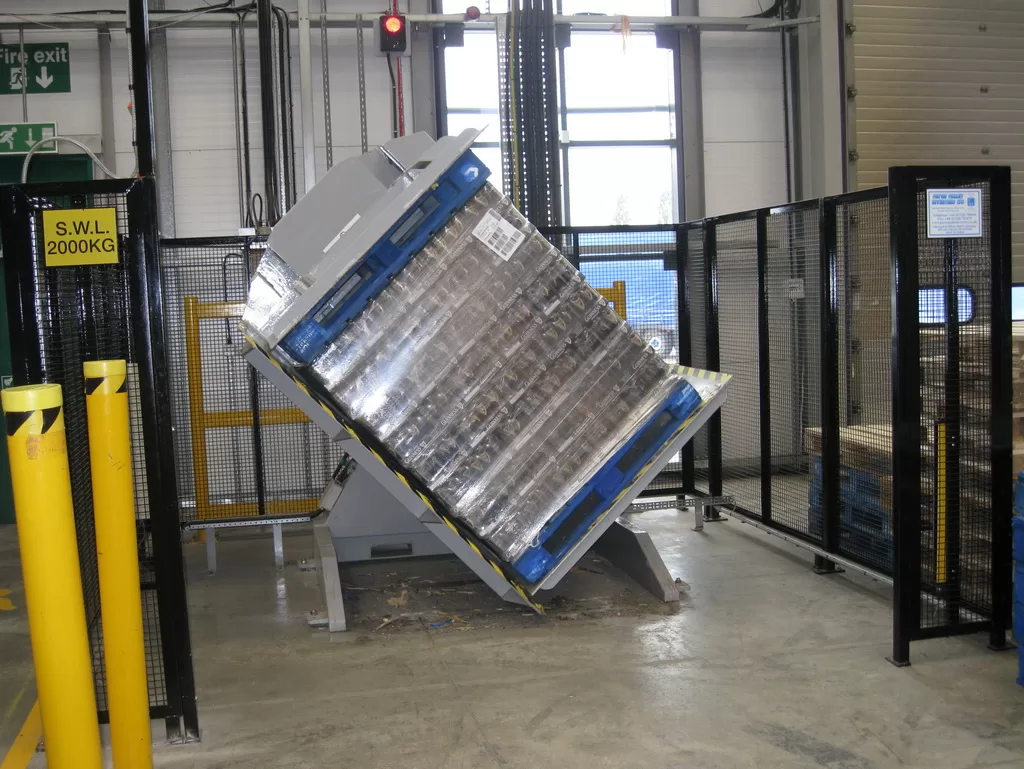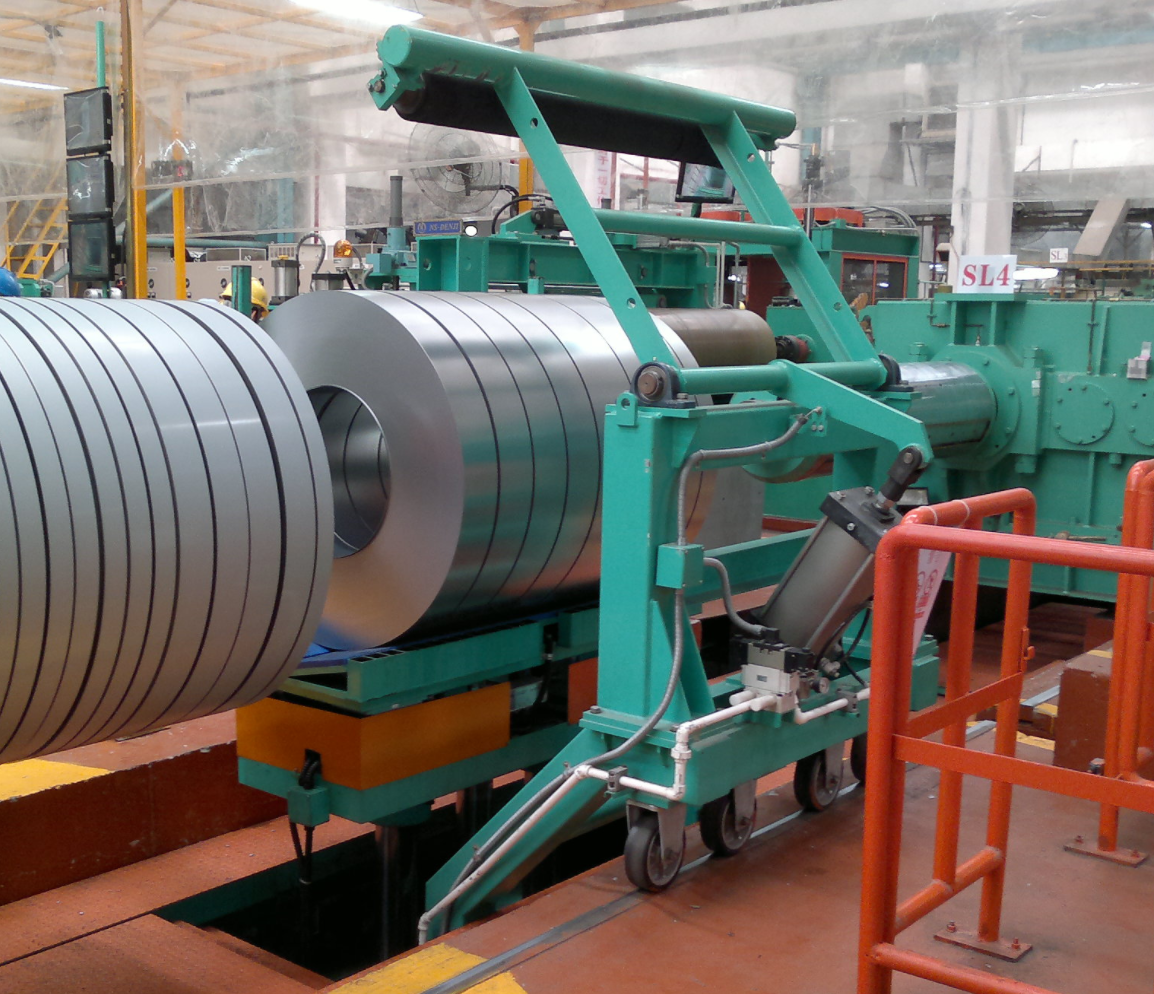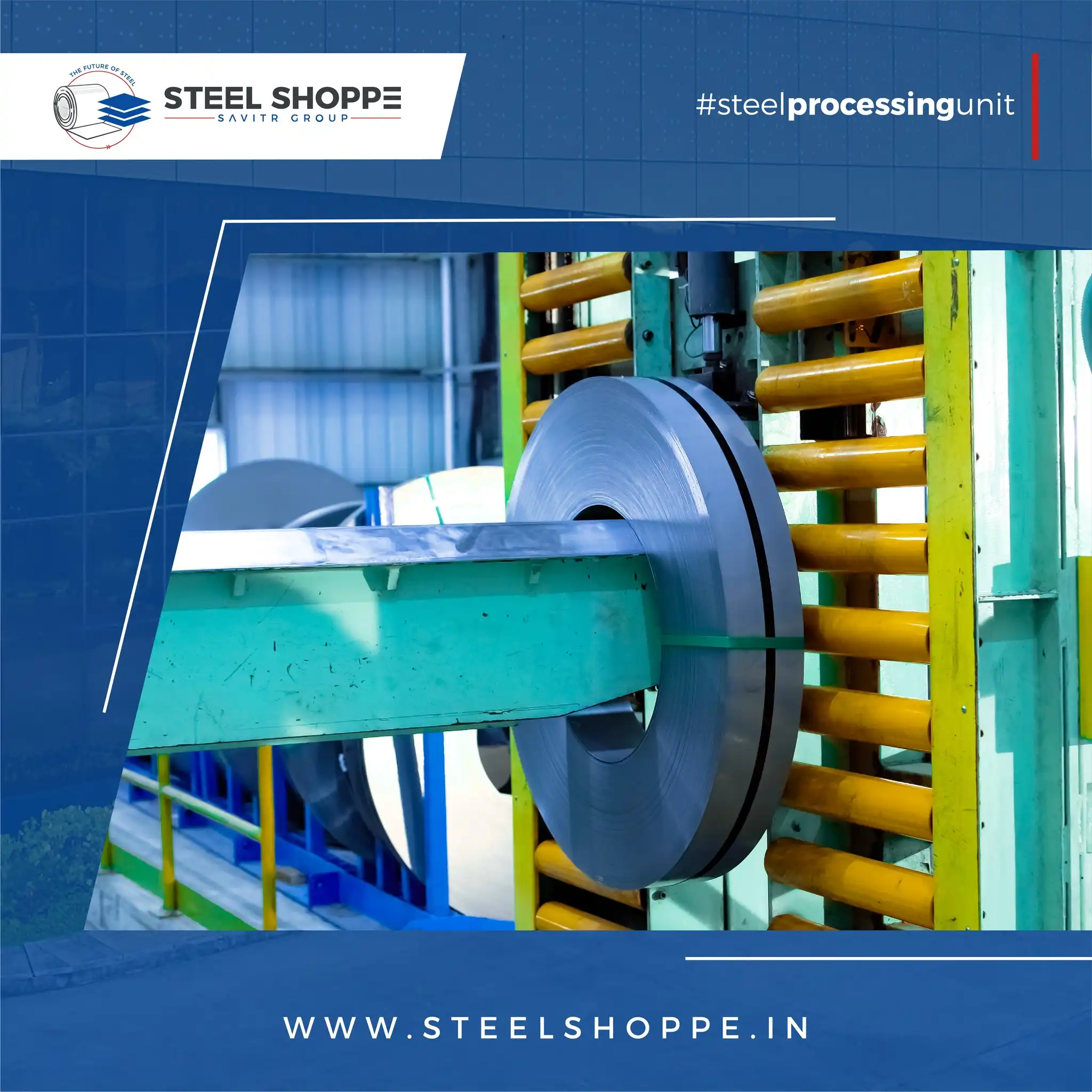The Best Wrapping Techniques for Steel Coils in Harsh Environments
Steel coils face relentless corrosion in harsh environments, jeopardizing quality and incurring massive costs. Ignoring proper protection leads to significant losses. Discover the best wrapping techniques employing advanced materials and methods to safeguard your valuable assets from mill to destination, ensuring pristine condition.
The best wrapping techniques for steel coils in harsh environments involve using advanced VCI (Vapor Corrosion Inhibitor) packaging materials like VCI stretch film and VCI covers in combination with robust physical barriers. Key elements include ensuring the coil is clean and dry, applying the wrap with sufficient tension and overlap, paying extra attention to vulnerable edges, and utilizing supplementary VCI products or desiccants within the package to create a controlled, corrosion-inhibiting micro-environment.
Protecting steel coils in challenging conditions demands more than just covering them. It requires a strategic approach combining the right materials with meticulous techniques. Let’s delve deeper into the science behind corrosion and explore the specific wrapping solutions that offer unparalleled defense, ensuring your steel arrives in perfect condition, regardless of the journey.
Why Protecting Steel Coils is Crucial
Are you tired of seeing perfectly good steel coils succumb to the insidious creep of rust before they can even be used? This isn’t just bad luck; it’s a preventable problem rooted in environmental exposure. Ignoring proper protection methods is like inviting financial loss directly into your operations, impacting quality and profitability.
Steel coils are highly susceptible to corrosion, primarily rust (hydrated iron oxides), when exposed to moisture and oxygen. This electrochemical process degrades the metal’s surface and structural integrity, leading to reduced quality, costly rework, and significant financial losses from scrapped material and customer rejects. Factors like high humidity, temperature fluctuations during transit and storage, and airborne pollutants accelerate this degradation. Effective wrapping techniques, especially those using advanced VCI (Vapor Corrosion Inhibitor) technology, create a protective barrier and a controlled micro-environment around the coil. This isolates the steel from corrosive elements, preventing the conditions necessary for rust formation. Understanding the science of corrosion – how anodic and cathodic reactions driven by an electrolyte lead to iron oxidation – is fundamental to selecting and applying the most effective wrapping solutions that preserve the coil’s value from the mill to the end-user, ensuring its integrity in harsh environments.
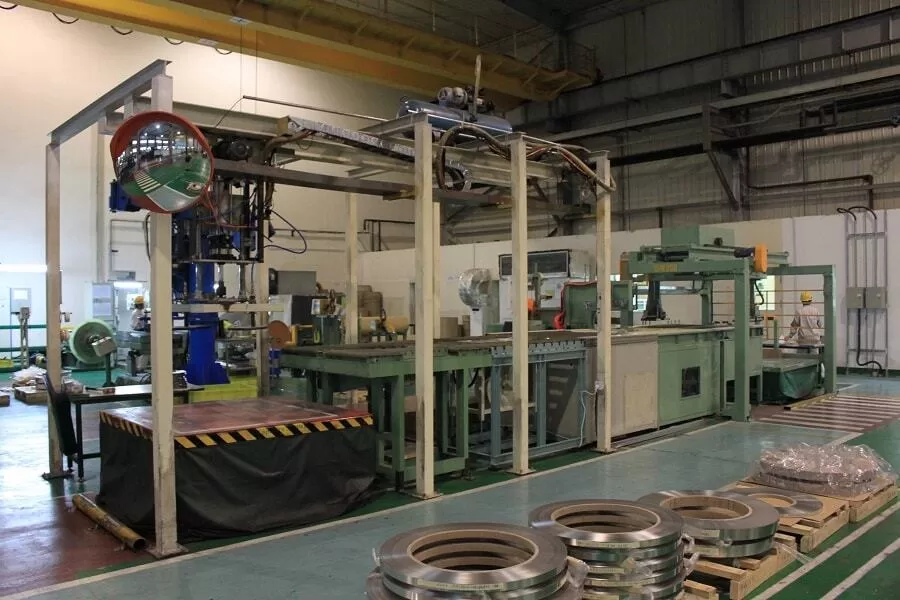
Protecting steel coils is crucial because they are highly susceptible to corrosion when exposed to moisture and oxygen. This electrochemical process, forming rust (iron oxide), degrades the metal’s surface and structural integrity, leading to reduced quality, rework, and significant financial losses from scrapped material and customer rejects. Proper protection, particularly through effective coil wrapping, isolates the steel from these corrosive elements. Methods utilizing physical barriers and chemical inhibitors create a controlled micro-environment around the coil, preventing the conditions necessary for rust formation and preserving the coil’s value from the mill through storage and transport to the end-user.
The Science Behind Steel Coil Corrosion
Rust is more than just a surface issue; it’s the visible manifestation of an electrochemical reaction that fundamentally weakens steel. Understanding this process is the first step in effectively combating it. When steel comes into contact with moisture and oxygen, specific areas on its surface behave like tiny electrical terminals. This leads to a complex reaction where iron atoms lose electrons (oxidation at the anode) and react with water and oxygen to form hydrated iron oxides – rust. The presence of an electrolyte, such as moisture from humidity, rain, or even sweat, facilitates the flow of ions between anodic and cathodic sites, perpetuating the cycle. This is why steel coils, often stored and transported in environments with fluctuating temperature and humidity, are particularly vulnerable. Without a barrier, the corrosion process can begin rapidly, potentially causing irreversible damage before the coil reaches its final destination.
The corrosion process is an electrochemical one involving oxidation and reduction reactions facilitated by an electrolyte. For steel (primarily iron), the core reactions are:
Anode: Fe → Fe²⁺ + 2e⁻ (Iron loses electrons)
Cathode: O₂ + 2H₂O + 4e⁻ → 4OH⁻ (Oxygen and water gain electrons)
Further reactions involving Fe²⁺ and OH⁻ lead to the formation of iron hydroxides, which then oxidize further to become rust (Fe₂O₃·nH₂O). This reaction requires simultaneous access to the metal surface by oxygen and an electrolyte (moisture). Disrupting either element is key to prevention.
Environmental Factors Accelerating Corrosion
Harsh environments amplify the basic corrosion process. Understanding these accelerators helps in selecting the right protective measures.
| Factor | How it Accelerates Corrosion | Impact on Steel Coils |
|---|---|---|
| High Humidity | Provides necessary electrolyte (moisture). | Increases surface moisture, enabling electrochemical cell. |
| Temperature Swings | Causes condensation (electrolyte formation). | Creates liquid water droplets, initiating rust. |
| Airborne Pollutants | Introduces chlorides, sulfates, acidic vapors. | Increase conductivity of electrolyte, speeding up reaction. |
| Salts (Coastal/Road) | Act as strong electrolytes. | Significantly increase corrosion rate ("salt spray"). |
| Industrial Gasses | SO₂, NOx, Ammonia create acidic conditions. | Lower pH of moisture on surface, increasing reactivity. |
| Physical Damage | Exposes fresh metal, creates stress points. | Localized corrosion initiation points. |
| Contaminants | Dirt, grease, fingerprints trap moisture/salts. | Create micro-environments for corrosion. |
By creating a barrier that minimizes contact with these factors, wrapping techniques can significantly slow or halt the corrosion process, ensuring the steel retains its quality and value.
Selecting the Optimal Wrapping Material
Your valuable steel coils need protection, but are you using the right material? Problem: Standard wraps offer limited defense against the elements. Agitate: This leaves coils vulnerable to rust despite being wrapped, potentially leading to costly rust damage. Solution: Choosing the optimal material, specifically designed for corrosion prevention, is the critical first step in safeguarding your assets.
Selecting the optimal wrapping material for steel coils involves choosing between basic physical barriers and active corrosion protection. While standard stretch wrap offers load stability and physical shielding, VCI stretch film and specialized VCI papers are superior for harsh environments. These materials release protective vapors that inhibit rust formation, even in the presence of moisture, ensuring long-term preservation.
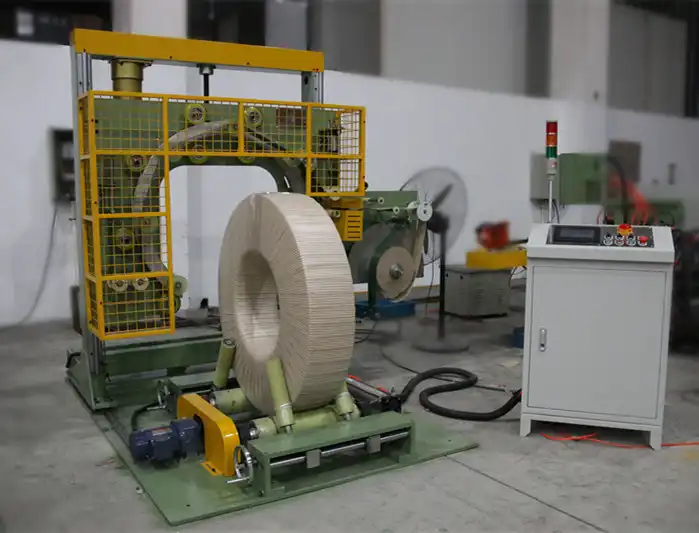
When it comes to protecting valuable steel coils, the wrapping material isn’t just about containment; it’s about preservation. Understanding the distinct properties and applications of standard stretch wrap and VCI stretch film is vital for selecting the optimal protective solution for your steel coils. The choice impacts cost, longevity, and the ultimate effectiveness against corrosion.
Standard Stretch Wrap vs. VCI Stretch Film: A Critical Comparison
Standard stretch wrap, typically made from Linear low-density polyethylene (LLDPE), is an excellent general-purpose film. Its primary benefits for coil wrapping include providing a physical barrier against dust, dirt, and minor abrasions during handling and transport. Its elastic recovery helps secure the coil shape and provides load stability, reducing the risk of damage from shifting during transit. Standard stretch wrap is readily available, easy to apply manually or with machines, and offers good transparency for product identification. It’s also significantly more economical upfront than specialized films. However, its major limitation regarding steel coils is its passive nature when it comes to rust. If moisture finds a way under the wrap, or if condensation forms inside due to temperature changes, standard stretch wrap does nothing to inhibit the resulting corrosion. Its effectiveness against rust is entirely reliant on maintaining a perfect, impermeable seal, which is difficult over long periods or in demanding conditions, especially in harsh environments.
VCI (Vapor Corrosion Inhibitor) stretch film elevates protection significantly. While also providing a physical barrier similar to standard stretch wrap, it is impregnated with chemical compounds that vaporize and create a protective atmosphere within the wrap. These VCI molecules deposit on the metal surface, even in recessed areas not in direct contact with the film, forming a microscopic barrier that interferes with the electrochemical corrosion process. This active inhibition means that VCI film protects against rust even in the presence of trace moisture or if the barrier is slightly compromised. VCI film offers superior, long-term protection (often rated for years), making it ideal for extended storage, overseas shipments, or transit through varying climates. It provides clean, dry protection, eliminating the need for messy rust preventative oils that require degreasing. While the initial cost is higher than standard stretch wrap, the savings from preventing costly rust damage, rework, and rejected shipments typically far outweigh the difference. Choosing the right VCI formulation (ferrous, non-ferrous, multimetal) is important for optimal performance. Beyond stretch film, VCI technology is incorporated into other materials ideal for coils, such as heavy-duty VCI poly sheeting, VCI scrim, and custom-made VCI coil covers that fit snuggly over coil ends. The choice between standard and VCI stretch film boils down to the required duration and level of rust protection versus budget. For reliable, long-term rust prevention of steel coils in harsh environments, VCI stretch film and related VCI poly products are the clear superior choice.
Mastering Application for Maximum Effectiveness
Is your stretch film truly protecting your coils, or just holding them together? Problem: Poor wrapping technique can render even the best materials ineffective, leaving hidden vulnerabilities where corrosion can begin undetected. Agitate: Gaps, insufficient tension, and overlooked edges invite devastating rust, undoing your investment in protective materials. Solution: Mastering application ensures the film’s protective potential is fully realized, creating a robust barrier that safeguards your coils.
Mastering stretch film application for steel coils is crucial. It requires ensuring the coil is clean and dry, using adequate film layers with at least 50% overlap, maintaining consistent tension for a snug fit, and paying special attention to vulnerable edges and ends to create a robust, vapor-tight barrier that maximizes protection against moisture and contaminants.

Simply applying stretch film to a steel coil without attention to detail significantly reduces its protective capabilities. This is particularly true when using VCI film, where the goal is to create a contained environment for the protective vapors to work effectively. Proper technique ensures not only physical containment but also maximizes the film’s ability to act as a barrier against moisture and contaminants. Overlapping layers adequately creates a redundant barrier, while applying consistent tension ensures the film conforms snugly to the coil’s shape, minimizing air pockets where moisture can collect and VCI vapors can escape. The edges and ends of a coil are especially vulnerable; these are often the first points of contact with moisture or physical damage. Giving them extra attention during wrapping is critical to preventing rust from starting at these exposed surfaces. Utilizing compatible tape or banding is also key; incompatible materials could compromise the VCI protection or damage the film, creating entry points for corrosion. Training personnel on these specific steps and the importance of each element is vital for consistent, high-quality wrapping outcomes that truly safeguard your valuable steel.
Key Steps for Optimal Coil Wrapping
Effective coil wrapping is a process that involves careful preparation, execution, and post-wrap handling. Overlooking any step can compromise the integrity of the protective barrier.
| Step | Action | Rationale |
|---|---|---|
| 1. Coil Preparation | Ensure the coil surface is clean, dry, and free from contaminants. | Contaminants like oils, grease, dirt, or even fingerprints trap moisture and interfere with VCI action. |
| 2. Material Selection | Choose the correct film gauge and type (standard/VCI). | Gauge impacts strength; VCI type (ferrous/non-ferrous/multimetal) must match the metal for effectiveness. |
| 3. Initiate Wrap | Secure film start and begin with significant overlap (min 50%). | Securing prevents unwrapping; high overlap creates a strong multi-layer barrier. |
| 4. Apply Tension | Maintain consistent, appropriate tension throughout. | Ensures snug fit, minimizes air pockets, provides load stability. Too loose or too tight compromises barrier. |
| 5. Protect Ends/Edges | Apply additional wraps specifically to inner and outer diameters. | These areas are most vulnerable to impact, moisture, and contaminant ingress. |
| 6. Full Encapsulation | Cover the entire coil surface without gaps or exposed areas. | Essential to create a sealed micro-environment for physical barrier and VCI vapor containment. |
| 7. Secure Finish | Secure the film end with appropriate tape or tucking. | Prevents unwrapping during handling; compatible tape is vital for VCI films. |
| 8. Inspection | Visually check for tears, punctures, insufficient coverage. | Identifies potential breaches in the protective barrier that need immediate repair. |
| 9. Careful Handling | Train personnel to handle wrapped coils gently. | Prevents accidental damage to the wrap during storage and transport. |
Following these steps, whether wrapping manually or with automated equipment, is crucial. Using enough film (a general rule is 1 sq ft of VCI for every 1-3 sq ft of metal surface or 1 cubic ft of void space), maintaining consistent tension, and paying special attention to edges are best practices that dramatically improve the effectiveness of the wrap. While automated wrapping machines can ensure consistency and efficiency, manual application still requires adherence to these principles to truly safeguard your valuable steel assets in harsh environments.
Implementing a Comprehensive Corrosion Prevention Strategy
Achieving truly effective rust prevention for steel coils goes beyond selecting the right stretch film and applying it correctly. It involves a comprehensive strategy that considers the entire lifecycle of the metal, from production to end-use. Relying solely on wrapping, even with VCI technology, might not provide fail-safe protection if other aspects of handling, storage, and environment are ignored. A truly effective rust prevention program is holistic, addressing the entire lifecycle of the steel coil, minimizing all "Dirty Dozen" factors.
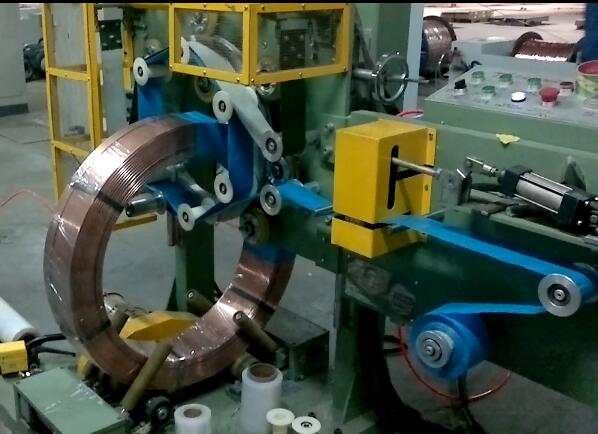
Beyond wrapping, a comprehensive strategy for steel coil corrosion prevention in harsh environments includes ensuring initial metal cleanliness and dryness, proper handling (avoiding fingerprints), controlling storage temperatures and humidity where possible, implementing strict handling protocols to prevent wrap damage, and utilizing supplementary VCI products like emitters or desiccants inside the package for added protection against varying conditions and potential micro-breaches.
Achieving comprehensive rust prevention for steel coils involves integrating various strategies beyond just applying stretch film. This includes proper pre-packaging coil cleaning and drying – residues like machining oils (unless compatible with VCI), dirt, or even fingerprints (containing salts and oils, a common culprit in "The Dirty Dozen") can become sites for corrosion initiation under the wrap. Using deionized or distilled water in cleaning fluids (addressing "Dirty Dozen" points 7 & 8 on water quality and pH) is crucial. Implementing careful handling to avoid film damage and prevent "contact corrosion" from acidic packing materials like wood or corrugated ("Dirty Dozen" point 2) is also vital. Controlling storage environment humidity and temperature ("Dirty Dozen" point 9) significantly boosts the effectiveness and longevity of VCI protection, as VCI volatility increases with temperature, ideally when needed most. Avoiding storing parts near manufacturing or heat-treat areas ("Dirty Dozen" point 4) which produce corrosive by-products is another key element. Utilizing supplementary methods like desiccants (to absorb moisture) or VCI emitters placed within the core or between wraps can provide an extra layer of defense for extended storage or extremely harsh environments. Lastly, training personnel on the importance of cleanliness, handling protocols, and proper VCI usage ("Dirty Dozen" points 1, 11, 12) is an often overlooked but critical component of a successful rust prevention program. A multi-faceted approach, treating the process from mill to end-user, ensures that the investment in quality stretch film and VCI technology is fully leveraged, minimizing losses and guaranteeing product quality.
Conclusion
Protecting steel coils in harsh environments is a critical challenge demanding a multi-faceted solution. By understanding the science of corrosion and leveraging advanced materials like VCI films and papers, coupled with meticulous application techniques, manufacturers can significantly mitigate rust risks. However, true success lies in a comprehensive strategy encompassing proper handling, pre-packaging preparation, and environmental consideration. Investing in quality materials and procedures, including a reliable coil packing line, is essential to preserve the integrity and value of your steel, ensuring flawless delivery every time.


